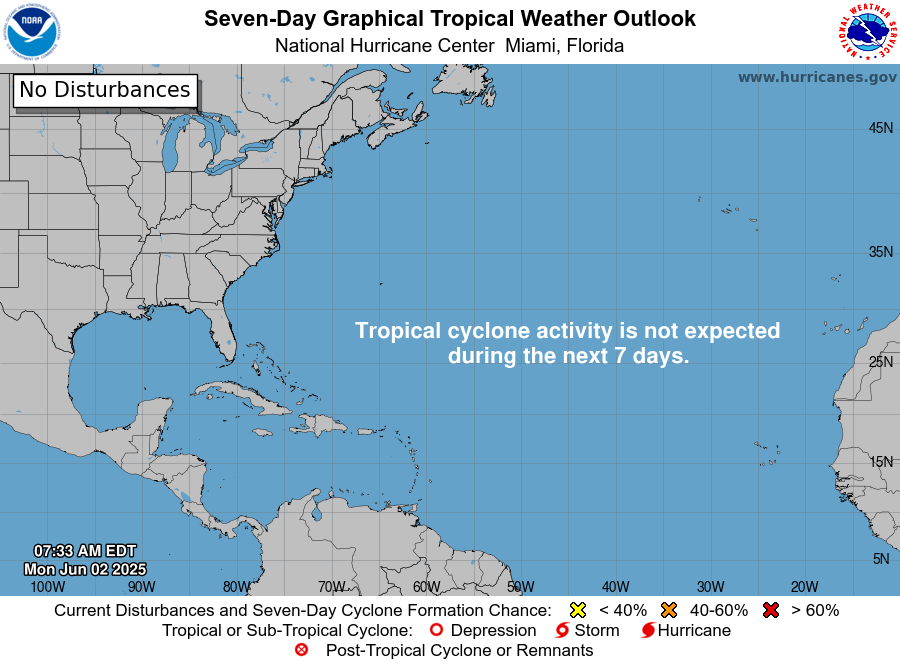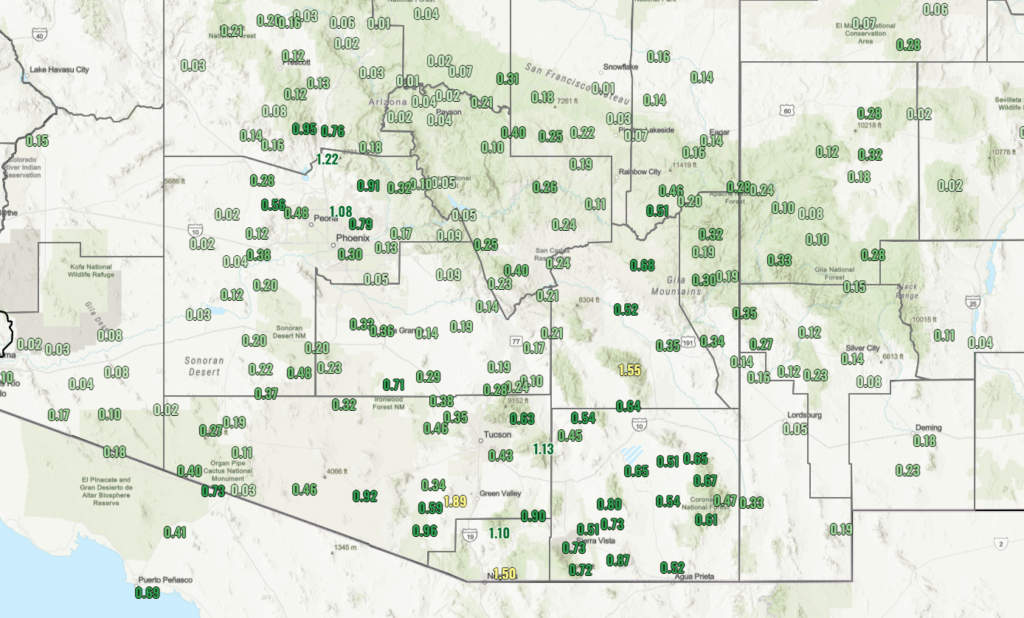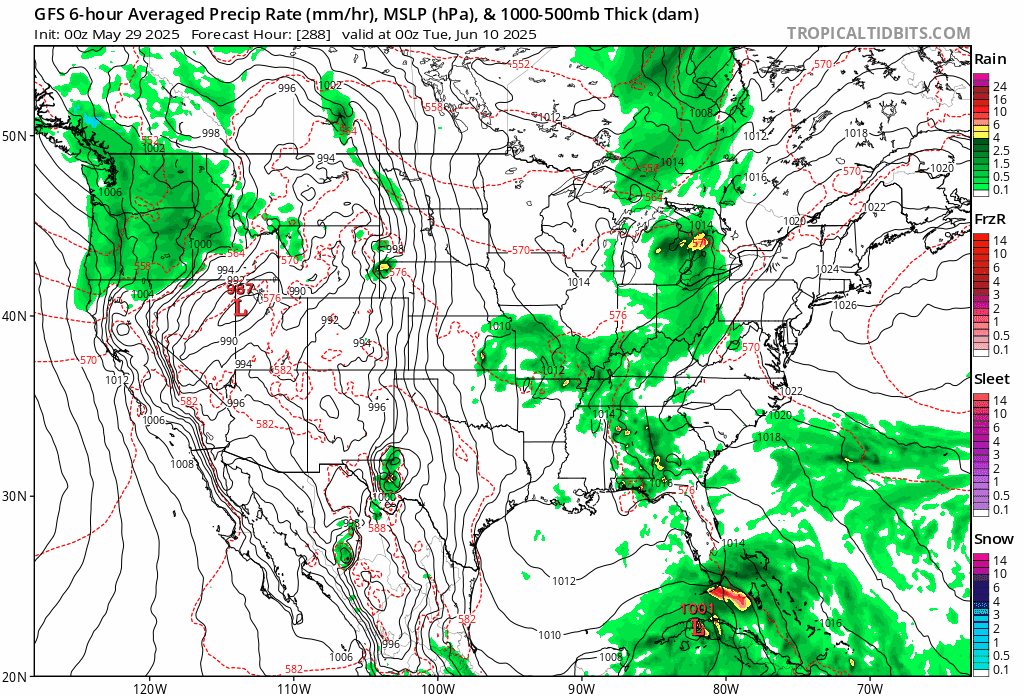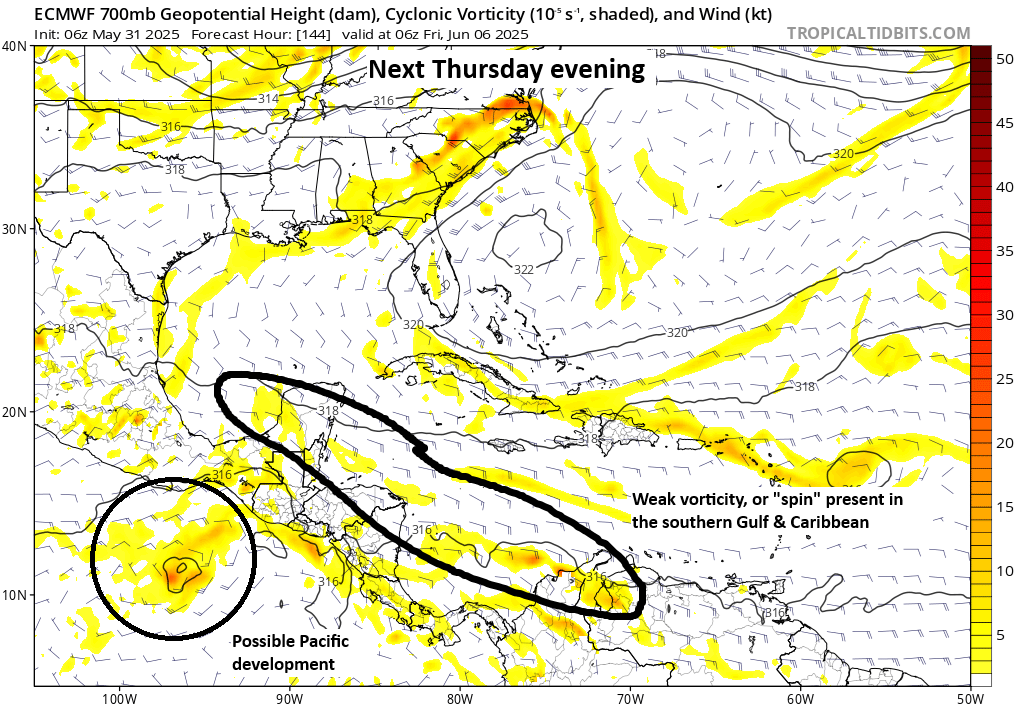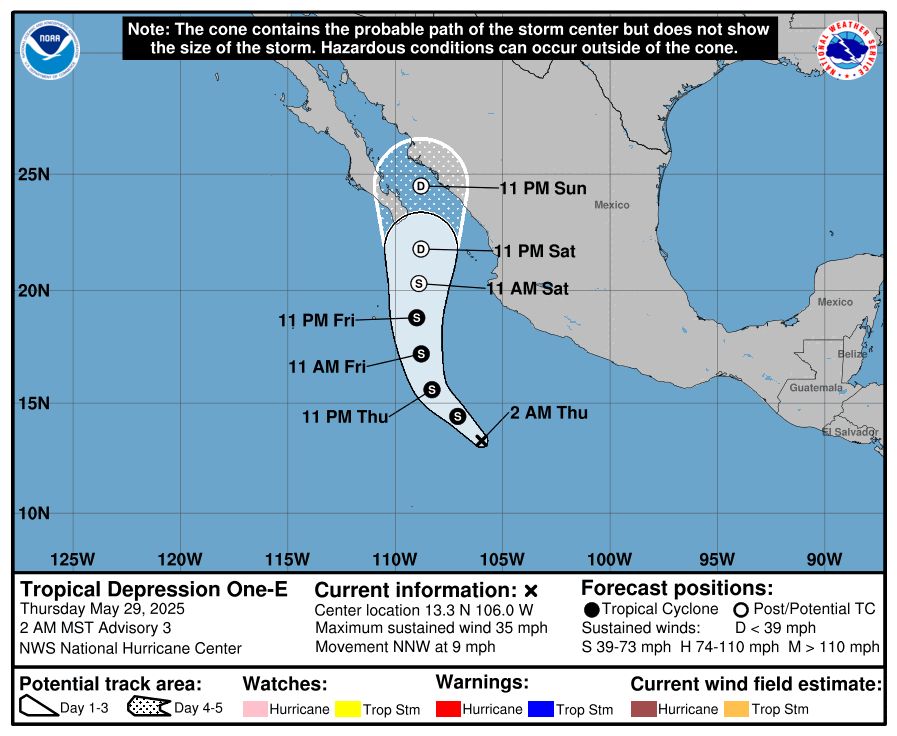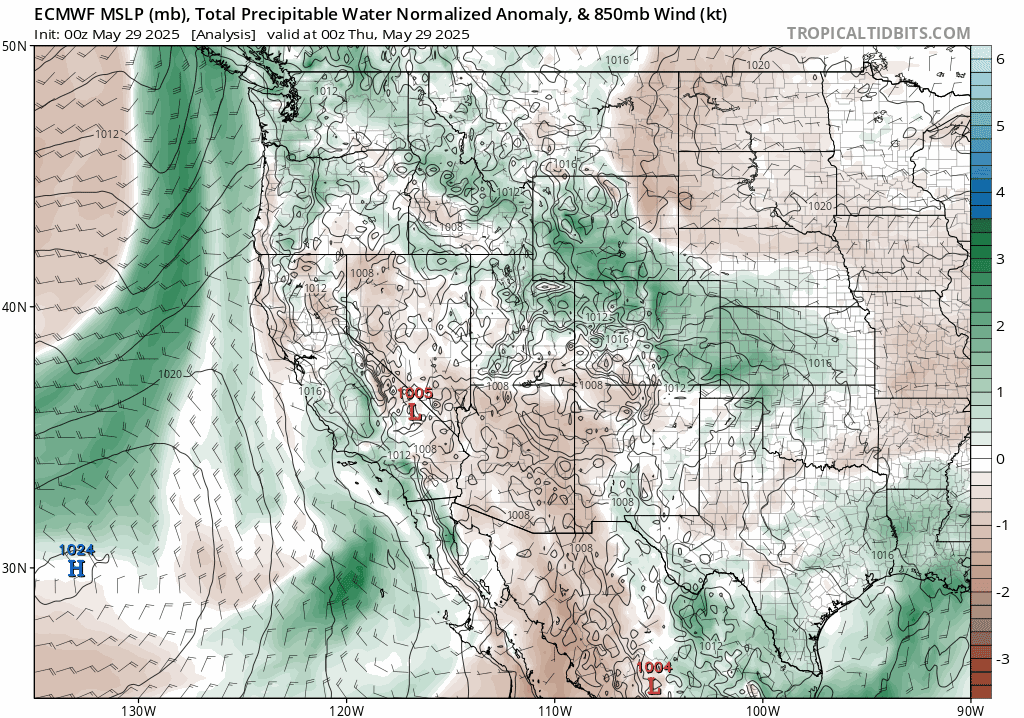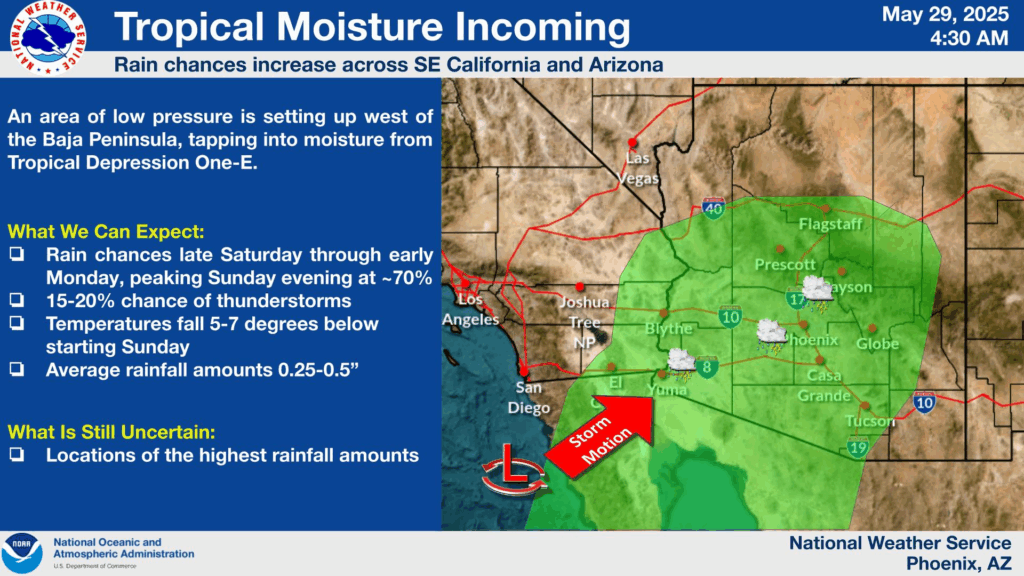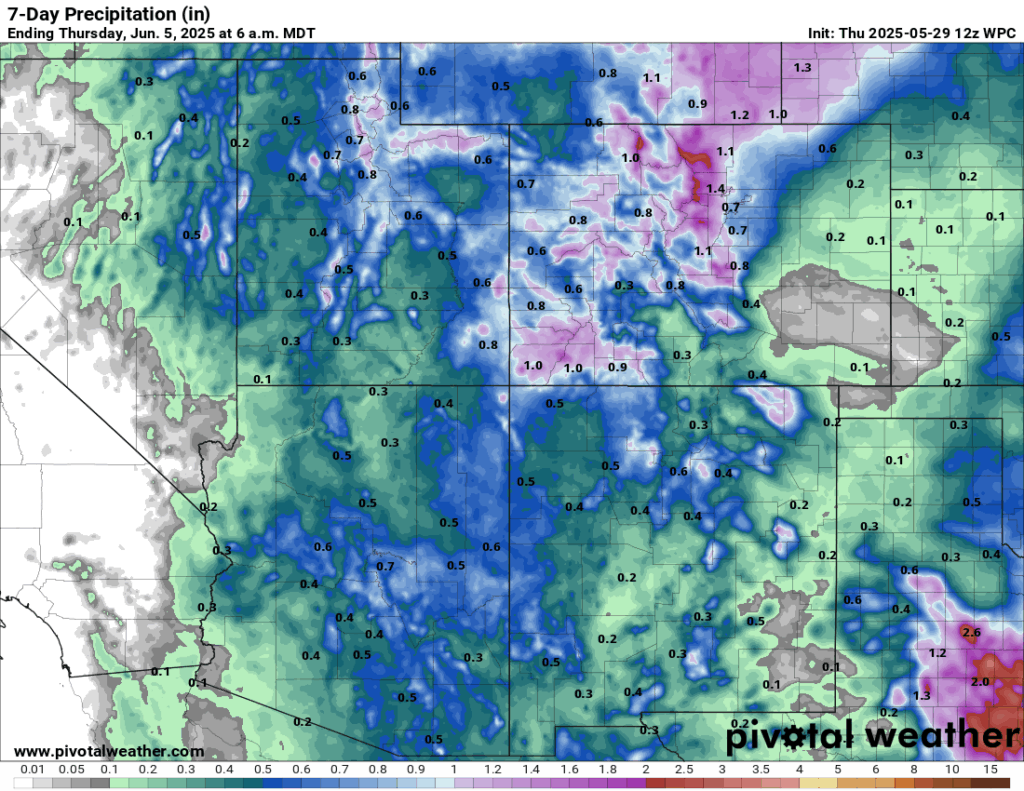In brief: No tropical development is expected in the Atlantic this week. Next week looks modestly more interesting, but there are no real serious signs of anything specific to be concerned with. We also talk about a potpourri of notes at the end.
Atlantic update for the week ahead
No tropical development is expected in the first full week of June. At this time, the Atlantic looks mostly under control. We continue to see standalone GFS operational model runs blow up tropical systems in the Gulf. As we noted on Saturday, this is frequent, common May and June bias of the GFS model and typically never verifies, certainly not as shown.
At least at this point there remains no ensemble agreement from the European model (or the GFS really) and no operational model agreement from the Euro, ICON, or AI modeling. So the GFS operational model, as it so often does this time of year, stands on its own with whatever it’s showing.
Looking ahead
Heading into next week, I do think things will look at least marginally more interesting, however I’m not sure that it’s going to end up on the Atlantic side of Mexico. Modeling seems to be hinting at some sort of gyre-ish pattern (not sure that it’s a true gyre though, so we’ll call it quasi-gyre lite) over Central America. When this happens, as it often does in June, we can start to generate sloppy storms in the Gulf or storms in the Pacific. Which side of the continent these storms form in is always a challenging question, depending on a lot of things.
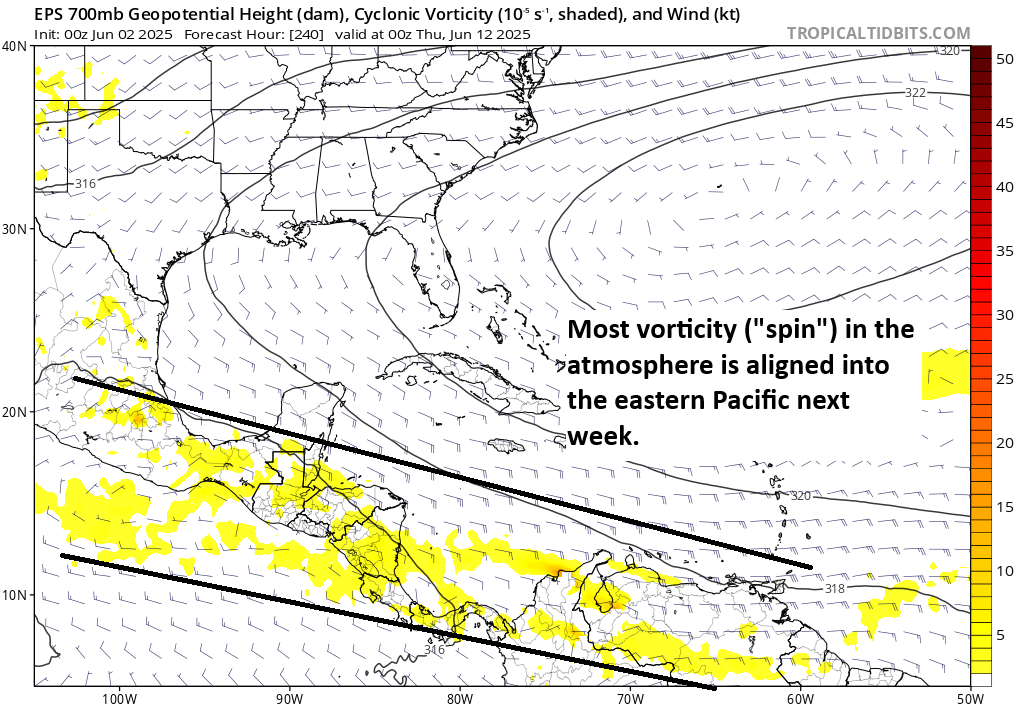
This time around, my gut feeling is that it may be the Pacific that cashes in with activity, just given model signals and where the best upward motion in the atmosphere may locate itself. Of course, as noted, this is always a challenging problem, so it’s not like we’ll just ignore it and call it a day. It will bear some watching, but at this point, no reliable model guidance is latching onto significant, organized development risk in the Atlantic heading into next week. So we have no real concerns at this point.
Other notes
A couple miscellaneous items that I’ll bring to your attention today.
Colleague and friend Michael Lowry wrote a particularly poignant op-ed this weekend in the New York Time about the risk of the rampant cuts to NOAA and the National Weather Service. While the newly released budget from Friday shows a small increase in funding to the NWS proper, don’t be fooled. Parts of the agency that are critically important to grow our understanding, improve forecasting, and increase our knowledge of meteorology are being absolutely gutted in that budget proposal. And to this point, there has been no sign that anyone in this administration wants to seriously do anything to get the NWS staffed back up to adequate levels today. This is not political, it’s common sense.
On a more positive note, I wrote a piece that I may ultimately republish here next year. But it is about which Major League Baseball stadiums see the most frequent postponed games due to weather. A few locations truly stand out, with a couple interesting surprises thrown in.
Finally, Arizona and northern Mexico had quite the soaking yesterday as Alvin’s remnants were shoved northward.
Some of the rain totals were fairly impressive with a few spots seeing north of 1.5 inches. We even had a flash flood warning just northwest of Phoenix this morning. Showers today will expand to the northern part of Arizona, as well as portions of southern Utah and western Colorado. All mostly welcome rain to be sure, but as is always the case in the West, localized flooding can occur with relatively small rain totals.
